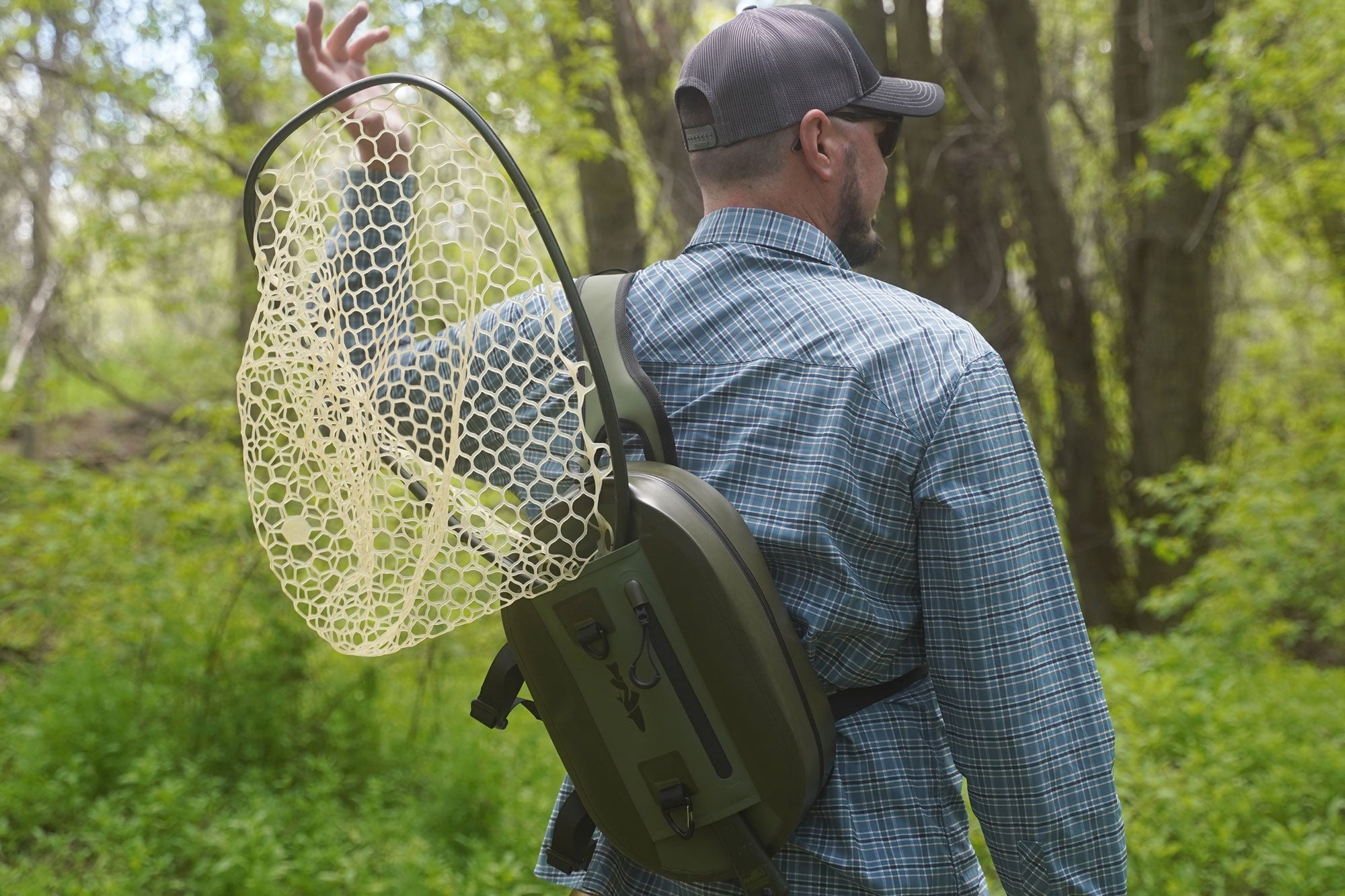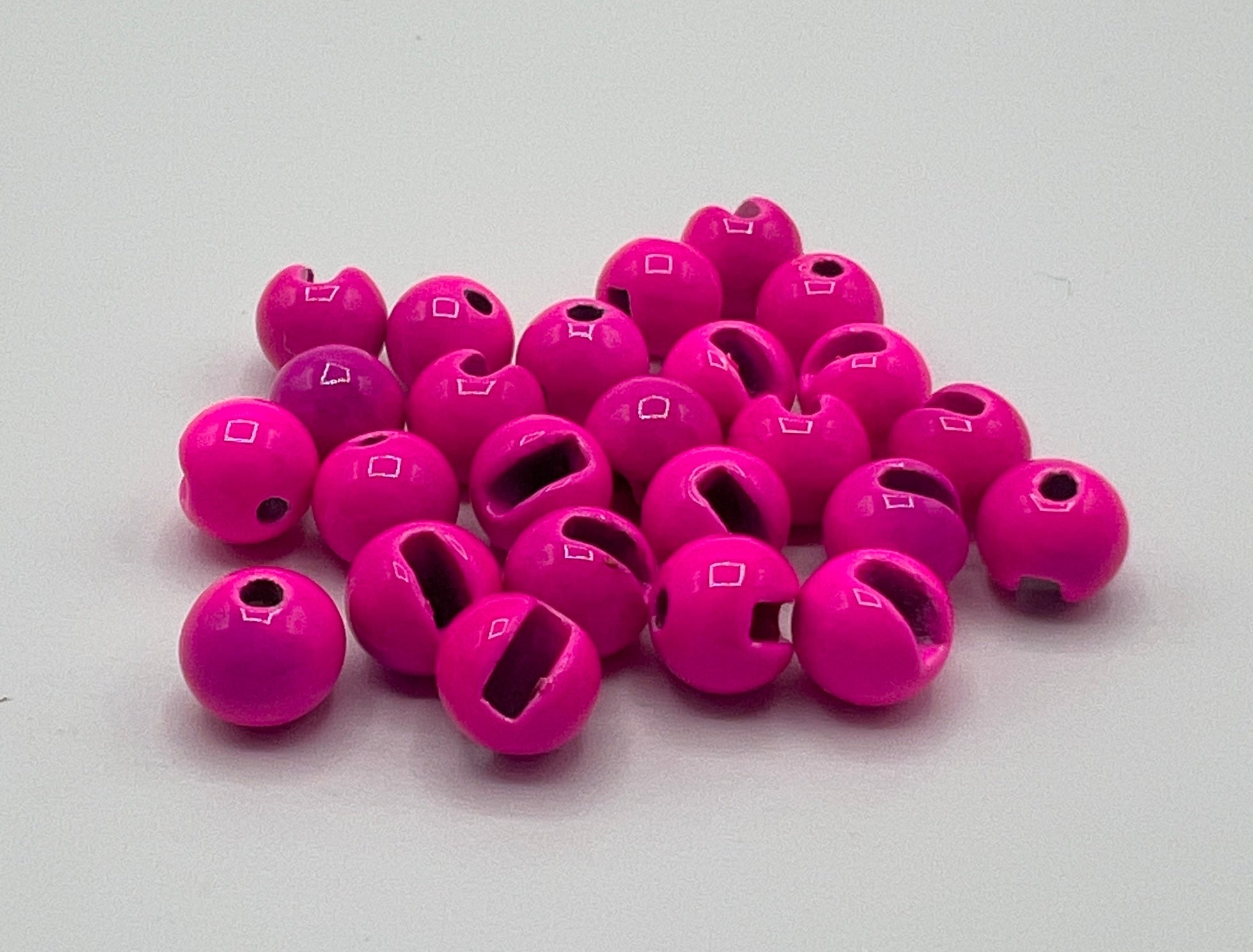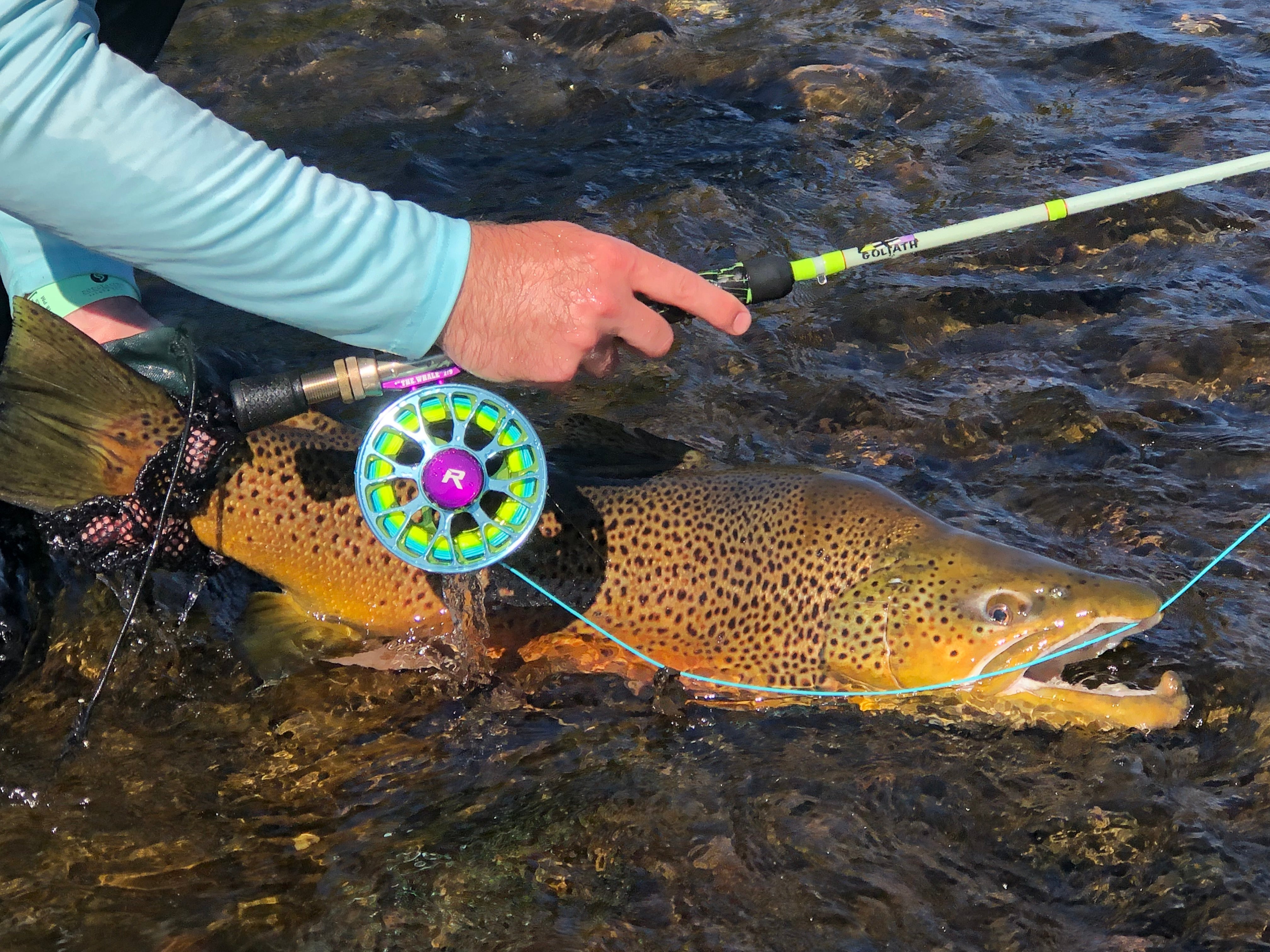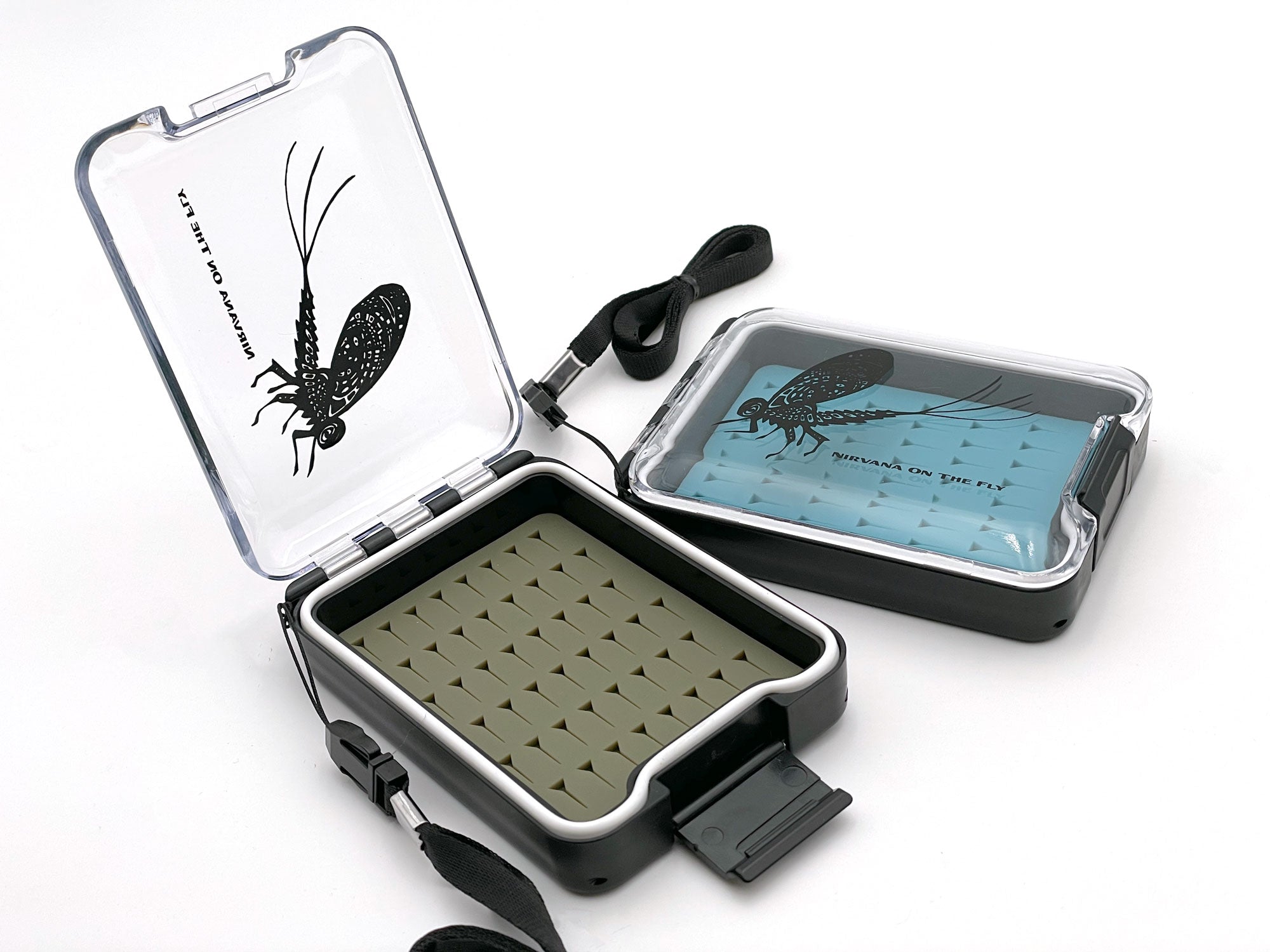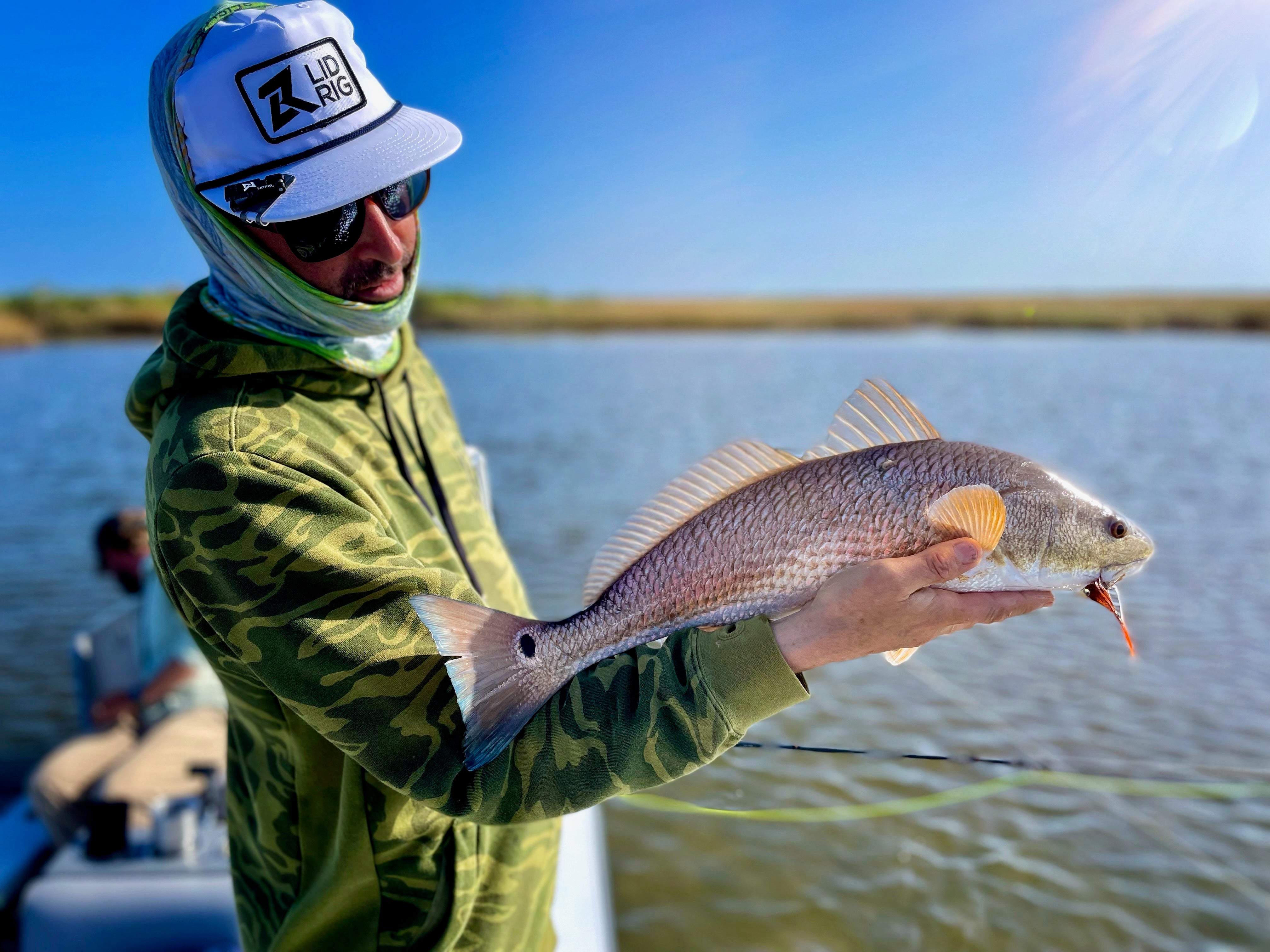Nymphing Matrix with Mathematical Explanations
Assuming a right triangle formed by the rod, leader, and the water's surface, we can use trigonometry to calculate the distance the fly pattern would travel. Let: L1 = Length of the fly rod (in feet) L2 = Length of the leader (in feet) D = Distance the fly pattern travels (in feet) θ = Angle of the rod (in degrees) H = Height of the rod (distance from the water's surface to the rod tip) Using the formula for the length of the hypotenuse of a right triangle: D = √(L1² + L2² - 2 * L1 * L2 * cos(θ)) Given that: L1 varies from 8.5 to 11.5 feet L2 is constant at 20 feet θ varies from 20 to 70 degrees You can calculate the distance D for each combination of L1 and θ within these ranges.
I have these calculated distances so a chart that visually compares the scenarios can be created. This will make it easy for anglers to interpret the data and choose the appropriate setup for their fishing needs. What I notice in the chart is that as you increase rod length, your ability to achieve a steeper angle into the water occurs when you have a fixed butt end rod height and fixed leader length. This is critical because the steeper of your entry point will lead to two factors. Typically faster water penetration to achieve depth and your steeper leader angle is crossing fewer cross currents.
Here the Yellow rows show a wedge indicating that your distance is increased along with Rod Length.
| Degrees (θ) | Rod Length (L1) (In feet) | Distance (D) (in feet) | Length of the leader (L2) (in feet) | Height (H) (in feet) |
| 20 | 8.5 | 23.294 | 20 | 2.191 |
| 20 | 9 | 23.917 | 20 | 2.332 |
| 20 | 9.5 | 24.547 | 20 | 2.471 |
| 20 | 10 | 25.183 | 20 | 2.607 |
| 20 | 10.5 | 25.825 | 20 | 2.739 |
| 20 | 11 | 26.473 | 20 | 2.868 |
| 20 | 11.5 | 27.127 | 20 | 2.993 |
| 25 | 8.5 | 23.978 | 20 | 2.773 |
| 25 | 9 | 24.589 | 20 | 2.911 |
| 25 | 9.5 | 25.208 | 20 | 3.045 |
| 25 | 10 | 25.833 | 20 | 3.174 |
| 25 | 10.5 | 26.465 | 20 | 3.299 |
| 25 | 11 | 27.104 | 20 | 3.42 |
| 25 | 11.5 | 27.749 | 20 | 3.536 |
| 30 | 8.5 | 24.695 | 20 | 3.283 |
| 30 | 9 | 25.292 | 20 | 3.413 |
| 30 | 9.5 | 25.896 | 20 | 3.538 |
| 30 | 10 | 26.506 | 20 | 3.659 |
| 30 | 10.5 | 27.122 | 20 | 3.776 |
| 30 | 11 | 27.746 | 20 | 3.889 |
| 30 | 11.5 | 28.375 | 20 | 3.997 |
| 35 | 8.5 | 25.448 | 20 | 3.793 |
| 35 | 9 | 26.03 | 20 | 3.918 |
| 35 | 9.5 | 26.618 | 20 | 4.038 |
| 35 | 10 | 27.213 | 20 | 4.155 |
| 35 | 10.5 | 27.815 | 20 | 4.268 |
| 35 | 11 | 28.424 | 20 | 4.376 |
| 35 | 11.5 | 29.04 | 20 | 4.479 |
| 40 | 8.5 | 26.248 | 20 | 4.303 |
| 40 | 9 | 26.814 | 20 | 4.425 |
| 40 | 9.5 | 27.387 | 20 | 4.543 |
| 40 | 10 | 27.967 | 20 | 4.657 |
| 40 | 10.5 | 28.554 | 20 | 4.766 |
| 40 | 11 | 29.147 | 20 | 4.871 |
| 40 | 11.5 | 29.748 | 20 | 4.971 |
| 45 | 8.5 | 27.005 | 20 | 4.824 |
| 45 | 9 | 27.553 | 20 | 4.942 |
| 45 | 9.5 | 28.108 | 20 | 5.057 |
| 45 | 10 | 28.669 | 20 | 5.167 |
| 45 | 10.5 | 29.237 | 20 | 5.274 |
| 45 | 11 | 29.811 | 20 | 5.376 |
| 45 | 11.5 | 30.392 | 20 | 5.474 |
| 50 | 8.5 | 27.823 | 20 | 5.352 |
| 50 | 9 | 28.352 | 20 | 5.463 |
| 50 | 9.5 | 28.886 | 20 | 5.57 |
| 50 | 10 | 29.427 | 20 | 5.672 |
| 50 | 10.5 | 29.974 | 20 | 5.77 |
| 50 | 11 | 30.527 | 20 | 5.863 |
| 50 | 11.5 | 31.088 | 20 | 5.952 |
| 55 | 8.5 | 28.71 | 20 | 5.879 |
| 55 | 9 | 29.219 | 20 | 5.978 |
| 55 | 9.5 | 29.732 | 20 | 6.072 |
| 55 | 10 | 30.251 | 20 | 6.163 |
| 55 | 10.5 | 30.776 | 20 | 6.249 |
| 55 | 11 | 31.307 | 20 | 6.332 |
| 55 | 11.5 | 31.844 | 20 | 6.411 |
| 60 | 8.5 | 29.68 | 20 | 6.402 |
| 60 | 9 | 30.167 | 20 | 6.487 |
| 60 | 9.5 | 30.657 | 20 | 6.568 |
| 60 | 10 | 31.152 | 20 | 6.645 |
| 60 | 10.5 | 31.653 | 20 | 6.718 |
| 60 | 11 | 32.16 | 20 | 6.787 |
| 60 | 11.5 | 32.673 | 20 | 6.852 |
| 65 | 8.5 | 30.751 | 20 | 6.925 |
| 65 | 9 | 31.213 | 20 | 6.989 |
| 65 | 9.5 | 31.677 | 20 | 7.049 |
| 65 | 10 | 32.146 | 20 | 7.105 |
| 65 | 10.5 | 32.621 | 20 | 7.157 |
| 65 | 11 | 33.101 | 20 | 7.205 |
| 65 | 11.5 | 33.586 | 20 | 7.249 |
| 70 | 8.5 | 31.946 | 20 | 7.446 |
| 70 | 9 | 32.379 | 20 | 7.494 |
| 70 | 9.5 | 32.815 | 20 | 7.538 |
| 70 | 10 | 33.256 | 20 | 7.578 |
| 70 | 10.5 | 33.702 | 20 | 7.614 |
| 70 | 11 | 34.151 | 20 | 7.646 |
| 70 | 11.5 | 34.606 | 20 | 7.675 |
Rods are typically angler specific. When selecting a European nymphing rod, take these key components into consideration. Length, European Style Specific, Speed and Sensitivity. I prefer a faster rod that has a softer more sensitive tip. This provides me with the ability to fish a lighter rod with shock absorbing tip that will resonate takes.
I've fishes, Sage, Scott, TFO, Hardy, Mystic, Diamondback, Orvis, Douglass and probably others that are Euro specific. Each has it's advantages but they all get the job done. 3 weight or 4 weight is what you probably want. Critical is to remember that your limitation isn't the backbone of the rod but the strength of your leader. Fishing 5x and blow is going to limit you so get a rod with shock absorption.
The Importance of Achieving Depth in European Nymphing: A Detailed Exploration with Mathematical Statistics
European nymphing is a fly fishing technique that prioritizes depth control to effectively present flies to fish feeding near the bottom. It encompasses a range of styles, including Czech, Polish, Spanish, and French nymphing that are now popularly known a Modern nymphing. Achieving the right depth is crucial, as trout and other target species often feed close to the riverbed substrate. In this article, I'll delve into the significance of achieving depth in European nymphing and support my claims with mathematical statistics.
Depth and Fish Behavior:
Statistical studies on trout behavior reveal that a substantial percentage of a trout’s diet comes from the benthic zone, which is the lowest level of a water body. Depending on water clarity, flow rate, and time of year:
- 60-80% of a trout's diet can come from the benthic layer. This includes organisms like nymphs, larvae, and other invertebrates.
Mathematical Importance of Depth:
Let's conceptualize a river section:
- Depth: 1 meter
- Preferred feeding depth for trout: Bottom 20 cm
If our nymph only reaches 40 cm below the surface, it's effectively fishing only 40% of the trout's primary feeding zone. This significantly reduces our chances of a hookup.
Mathematically:
Chance of interception (when nymph is at 40 cm) = 40/100 = 0.4 or 40%
Chance of interception (when nymph is at 80 cm) = 80/100 = 0.8 or 80%
Thus, by ensuring our nymph reaches 80 cm instead of 40 cm, we can theoretically double our chances of a fish seeing and taking our nymph.
The Impact of Flow Rate:Rivers with faster flow rates require nymphs to be heavier or to be presented differently to reach the desired depth quickly. If a nymph takes too long to sink:
- In a 10-meter stretch of fast water, a nymph taking 5 seconds too long to reach the feeding zone might only be in the target depth for a fraction of that stretch, significantly reducing its effectiveness.
For example, if the nymph is in the desired depth for just 2 meters of a 10-meter stretch:
Effective fishing depth = 2/10 = 0.2 or 20%
Again, depth control directly affects our fishing efficacy.
Tangle and Snag Risks:While fishing deep is essential, there's a balance. Nymphs that are too heavy or lines that are too slack increase the risk of snags.
Statistically, let’s say:
- Every snag takes 3 minutes to address (including rerigging).
- In a day of fishing, you experience 20 snags due to poor depth control. That's 60 minutes or an hour spent not fishing.
Economic Impact:If every snag results in the loss of a nymph worth $2, and you lose 20 nymphs:
Economic loss = 20 nymphs x $2/nymph = $40
Over a fishing season, this can add up, emphasizing the importance of accurate depth control not just for fishing success but also for cost efficiency.
Achieving the right depth in European nymphing isn't just a matter of technical proficiency; it's a critical component for success. Mathematical statistics illustrate the direct correlation between depth control and fishing efficacy, economic efficiency, and overall angling experience. Like any other skill, it requires practice, observation, and adaptability to master.
The Importance of Achieving a Steeper Leader Angle in European Nymphing: A Mathematical Perspective
In European nymphing, achieving the right leader angle plays a pivotal role in the presentation, detection, and success rate of catching fish. A steeper leader angle minimizes the effect of cross currents on the line, leading to a more natural drift of the nymph and faster entry to the desired depth. Here, I will discuss the importance of this aspect in detail, supporting my claims with mathematical statistics.
Hydrodynamics and Cross Currents:Water in a river or stream seldom flows in a linear, uniform manner. Instead, it flows in varying velocities and directions due to obstructions, changes in depth, and riverbed contours. These variations in flow lead to cross currents.
Mathematical Implications of Leader Angle:Consider a river section with a width of 5 meters. If a nymphing setup is cast straight across the river (90° angle), it will be affected by almost every cross current across that 5-meter width.
However, if the same setup is cast at a 45° angle, it's effectively exposed to cross currents in a triangle half that width, or about 2.5 meters.
Mathematically:
Exposure to cross currents at 90° = 100% of river width = 5 meters
Exposure to cross currents at 45° = 50% of river width = 2.5 meters
Reducing the exposure by half significantly minimizes the chance of unnatural drift caused by conflicting currents.
Leader Angle and Drag:Drag is the unnatural movement of the fly in water, primarily caused by the differential in current speeds. A steeper leader angle reduces the line's exposure to various current speeds, thereby decreasing drag.
Using trigonometry, if the horizontal component of a 10-meter leader at a 45° angle is:
Horizontal component = 10 meters * cos(45°) = 7.07 meters
For a 30° angle:
Horizontal component = 10 meters * cos(30°) = 8.66 meters
Clearly, the 45° angle exposes less line horizontally, and therefore to fewer cross currents, than the 30° angle. Therefore reducing drag which will affect presentation as well as speed to depth as described early. In this scenario you are looking at several compounding affects to put you in position to be successful.
Sensitivity and Strike Detection:A steeper leader angle also offers improved sensitivity. With a direct line from rod tip to nymph, any disturbance or take by a fish is transmitted more directly, improving strike detection. Rather than the takes reverberatory affects having to travel through multiple cross currents, the crossing of fewer will provide more an immediate and abundant response to the angler.
For a straight vertical leader (i.e., 0° from the horizontal):
Strike transmission efficiency ≈ 100%
But as the angle widens:
Efficiency decreases, as the lateral movement gets dispersed over a longer horizontal component.
Improved Hook Set:A steeper angle allows for a more vertical hook set, which is often more effective in getting a solid hook-up compared to a side or slanted hook set. Hook setting upward is more effective as you are directly and more immediately setting into the upper jaw line that is much more substantial than potentially setting into the empty space of the draw and ultimately connecting somewhere along the jaw line.
The angle at which a leader enters the water in European nymphing has profound implications on the presentation, sensitivity, and overall effectiveness of the technique. Mathematical analysis only underscores the importance of managing this angle to mitigate the impacts of cross currents, maximize strike detection, and improve hook sets. As with many aspects of fly fishing, understanding the science and mathematics behind the techniques can greatly enhance an angler's proficiency and success on the water.
Euro nymphing is one of my favorite techniques and this transcript summaries can get you well on your way to becoming extremely effective and starting your adventure into the rabbit hole of modern nymphing.
Lance Egan, USA Fly Fishing Team
Devin Olsen, USA Fly Fishing Team
Want to get deals on gear, fly fishing trips, and tons of information? Become a member of the Loyalty Club at Fly Fishing Insider Podcast. Join Now

By Christian Bacasa
Host of the Fly Fishing Insider Podcast
Fly Fishing Insider Podcast Official Website
Instagram Fly Fishing Insider Podcast
Instagram Dupeafish
Facebook
Pinterest
Twitter
LinkedIn
Tumblr
Watch on YouTube



